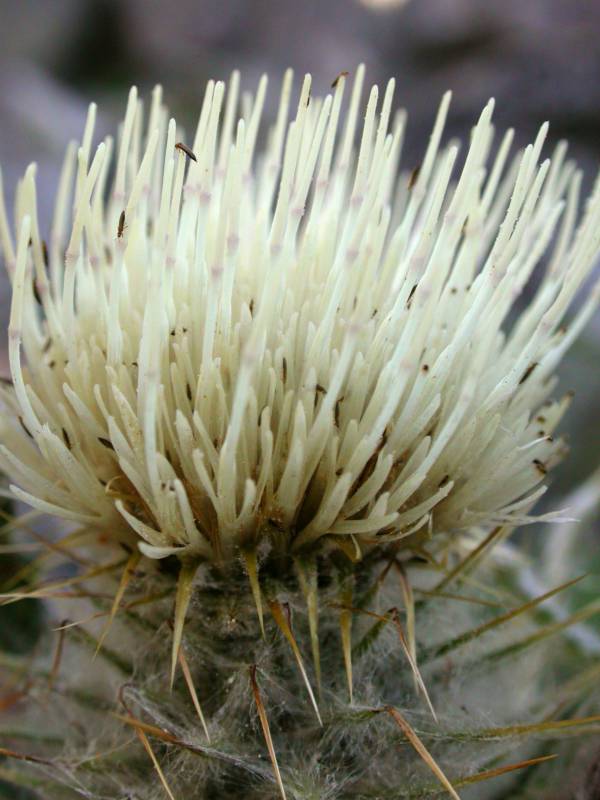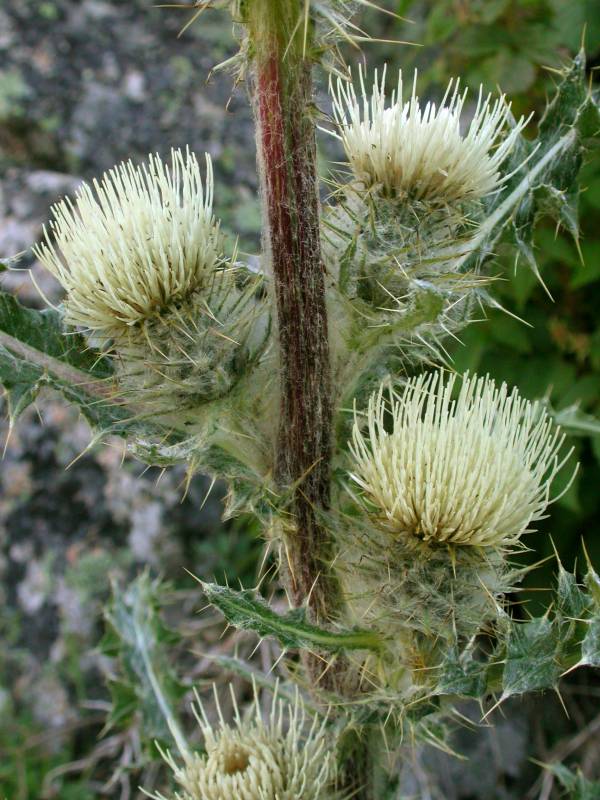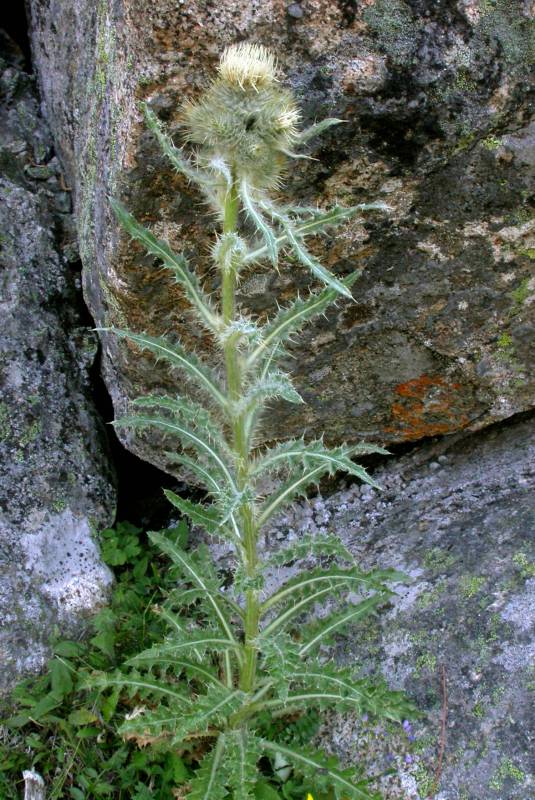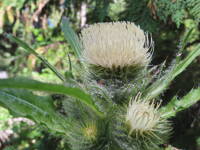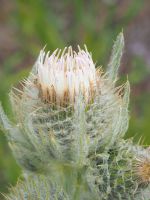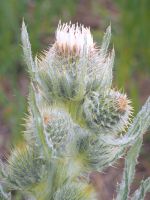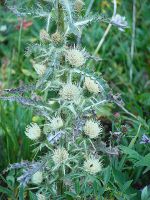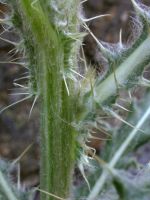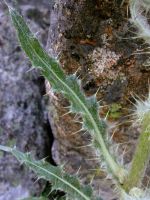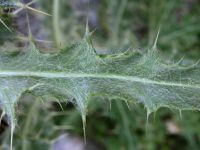Distribution: Occurring east of the Cascades crest in Washington; British Columbia to Washington, east to Alberta, Montana, and Wyoming.
Habitat: Moist lowlands, open slopes and fields.
Flowers: July-August
Origin: Native
Growth Duration: Perennial
Conservation Status: Not of concern
Pollination: Bumblebees, bees, butterflies, beetles, hummingbirds
Taprooted, short-lived perennial, the stem densely but loosely covered with long, soft hairs, 4-15 dm. tall, tapering above.
Leaves with some loose, soft hairs above, thinly white-woolly below, narrowly lanceolate, toothed and moderately spiny.
Heads clustered toward the top of the simple stem in a compact or elongated inflorescence; involucre 2-3 cm. high, strongly spider-webby, not much imbricate, the bracts all narrow and tapering, the middle and outer with a short, straight spine, the inner often twisted; flowers all tubular, creamy-white; receptacle densely bristly.
Publication: Trans. Amer. Philos. Soc., n. s. 7: 418. 1841.
PNW Herbaria: Specimen records of Cirsium hookerianum in the Consortium of Pacific Northwest Herbaria database.
WA Flora Checklist: Cirsium hookerianum checklist entry.
OregonFlora: Cirsium hookerianum information.
E-Flora BC: Cirsium hookerianum atlas page.
CalPhotos: Cirsium hookerianum photos.
USDA Plants: Cirsium hookerianum information.

